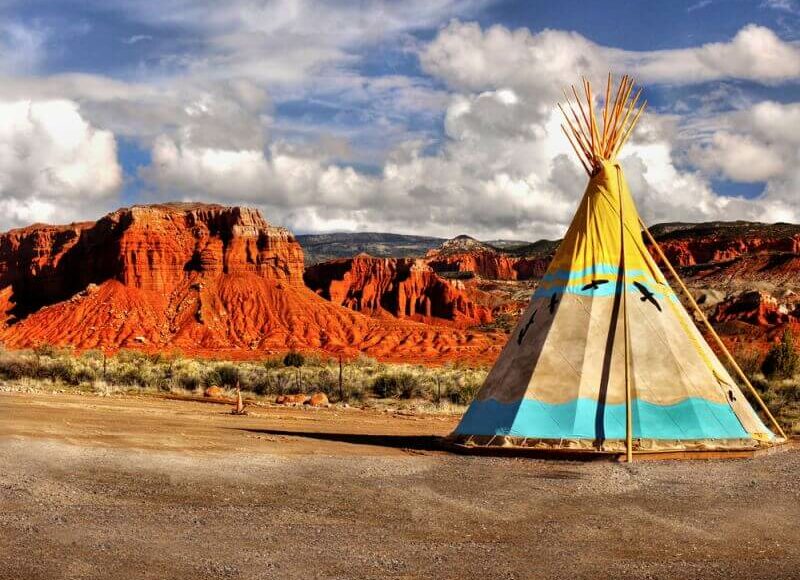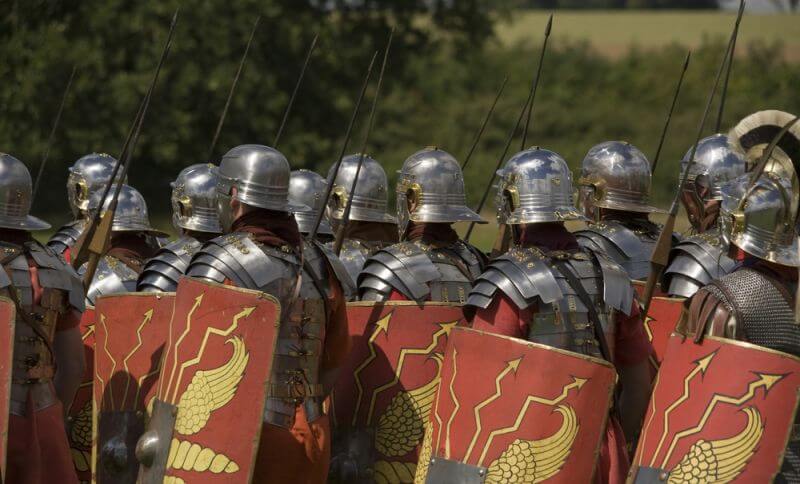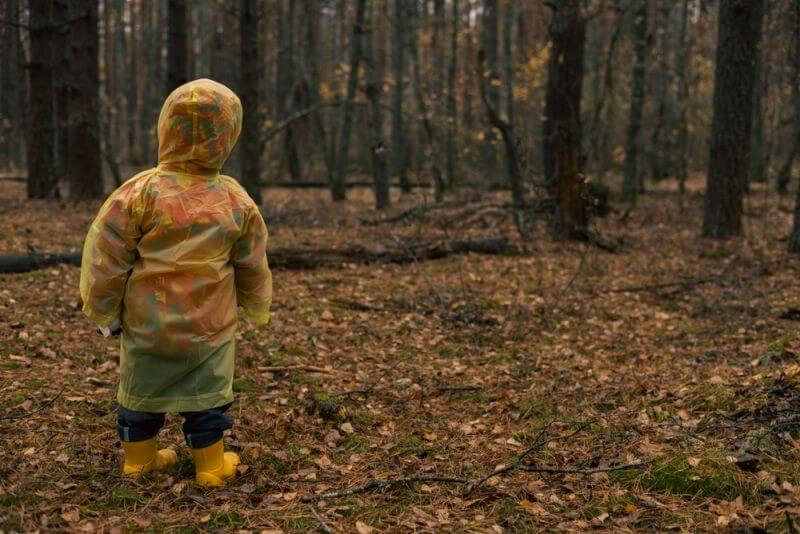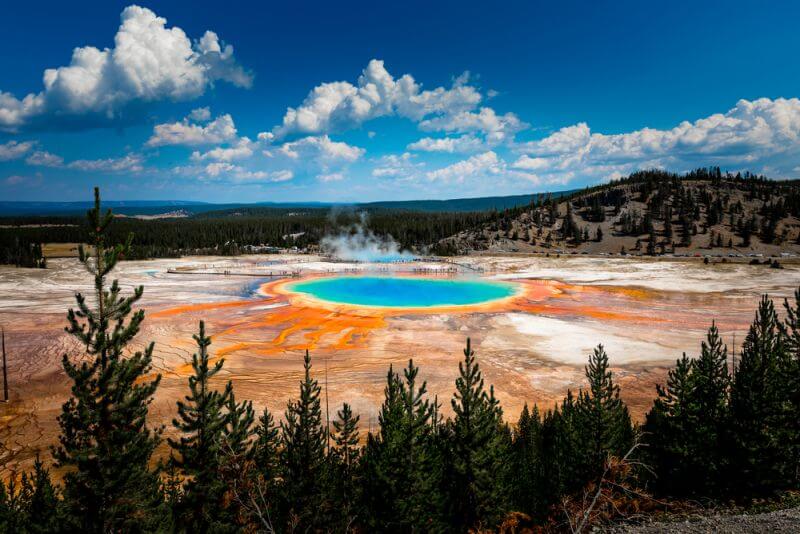Throughout human history, survival has been one of mankind greatest necessities. Quite literally, any group of people who could not figure out how to survive in their environment would be decisively dealt with by nature and removed from history. Those people who survived, did so by learning how to either live in harmony with nature or how to conquer nature, bending her to their will.
Here in the United States, we can look back through history to the American Indian Tribes, otherwise referred to as the “Native Americans.” Regardless of which name is used, these were truly amazing people, who epitomized living in harmony with nature. Even today, their reputation for living in harmony with nature is legendary. While they may not live like they used to, their belief system is still in alignment with their desire to be one with nature.
Actually, it goes further than that, as the religion of the Native Americans is a pagan religion. In other words, they actually deify nature and worship it. They saw their place as being part of nature, not as being separated from it, like many other religions.
This may seem unimportant; but it is their attitude towards nature and their place in it, that has caused them to become such great survival experts. Even today, you could take many of them and drop them in the middle of nowhere and they’d be just fine, getting what they needed from nature, as they worked their way back home.
Granted, not all tribes lived the same sort of lives. Some were hunter/gatherers and others were farmers. Even so, they all shared some things in common; especially their love for nature and their affinity for it. These people didn’t so much live with nature, as they blended into their surroundings. They were as much a part of nature as the animals they hunted and the natural resources that they used.
We could literally go on forever, talking about how the American Indian lived off the land. But I’d like to point our just a few key things, which I believe are readily adaptable to us as preppers and survivalists. Maybe I’ll come back another day to talk about more.
They Were Curious
The life of these Americans was one of constant learning. Indians were curious, wanting to understand what they saw. They would watch, trying to grasp the lessons of the animals which shared their environment. Much of their wisdom was gained from their observations of nature, especially the way the animals lived.
When the white man came into their territory, they were just as curious about him, as they were anything else. They saw the manufactured goods that these new residents had and quickly grasped the benefit of having such things. So, when the opportunity presented itself, they would either trade for or steal what they wanted.
We must understand that these indigenous people didn’t have the understanding of personal property rights that we do. To them, if you laid it down, you were through with it and there was nothing wrong with them picking it up. The idea that the owners of that property would consider this stealing was as foreign to them as the idea of owning land.
Their curiosity allowed them to adapt to technology quickly. Even though the rifle was new to them, they quickly learned not only how to use them, but also how to repair them, when necessary. This held true for many other things, as they gained an understanding of the white man’s technology.
They Were Observant
A large part of Native American upbringing was learning to truly see what was around them. The animals they hunted and the plants that they ate or used for medicines blended into their environment, with many of them being well camouflaged. If one didn’t learn how to truly see what they were looking at, they would not find deer to kill, plants that could be used for medicines, or know where apex predators were hunting.
In contrast, we who have grown up in a modern industrialized and connected world rarely see what’s around us. We don’t see the birds perched in the trees, the deer watching from the forest to see if it is safe to come out or the fish that’s laying still in a brook. We could have dinner passing by within ten feet and not even see it.
There was a scene in the original Doctor Doolittle movie, where the doctor asks the young man who becomes his apprentice if he could tell the difference between two different birds, perching in the tree, to the point where he could recognize them the next day. That’s the level of observation needed to live in the wild.
They Lived a Minimalist Lifestyle
While there have been many societies and cultures who can be referred to as minimalist, the American Indians took that to an amazing level, especially the nomadic tribes, such as the various tribes of Plains Indians. Everything they had needed to be mobile, able to me hauled on a travois.
This does not mean that they didn’t appreciate the finer things. They quickly adapted to using glass beads to adorn their clothing, once European traders brought them to these shores. But they understood that they couldn’t allow their possessions to weigh them down. A fancy beaded shirt might be worn every day, rather than saving it for a special time.
Everything these wanderers owned had a purpose in their lives. They appreciated beauty as much as anyone; but they found beauty in the world around them, rather than carrying it with them. This appreciation of nature allowed them to have that beauty, without being overburdened.
They Hunted for What they Needed
Most Native American tribes hunted, even though which farmed, growing grains and vegetables. As best I know, none of them raised domesticated animals to eat. The only domesticated animals they ate were those they traded for or stole from the herds of ranchers.
Hunting was such an important skill, that a brave’s ability as a hunter was just about as important in determining how much he was respected as his ability as a fighter. They did very little preserving of meat, other than making jerky and pemmican, so hunting was a year-round task, made harder by winter weather.
This goes back to being observant. There are things we could learn about hunting from these master hunters. At times when no white man could find game, the Indian was eating. Maybe not eating well, but he could hunt well enough to sustain life.
They Wasted Nothing
One of the more amazing things about the American Indian lifestyle was how good they were at making use of everything. If they killed a buffalo, every part of that animal was used. Nothing was wasted. The hide, of course, was valuable in its own right, being turned into blankets, robes and coverings for their tents. Look at a picture of a buffalo covered with snow sometime, and you’ll get an idea of just how good an insulator their hides were.
Other parts were used for a variety of things. Some bones were used for making tools, such as knappers for chipping flint to make arrowheads and needles for sewing. Other bones became scrapers, to clean the inside of hides of fat, as part of the process of curing those hides. Some internal organs, like the bladder were hollowed out, dried, and became container for small items. Even the stomach could be used as a cooking vessel.
They Knew What Nature Offered and What it Could Do for Them
When we look at their lifestyle, one of the things that stands out was that they made such good use of what nature offered them. The European settlers who came to this land might have thought that those were here before were uneducated. That would have been a false assumption. Maybe they were lacking in the kind of education those Europeans had; but they had their own.
As an Indian child grew, his or her parents taught them about the world around them. They might not be able to read a book, but they could read an animal’s trail. They might not be able to do higher math, but they could count a flock or herd, reporting back to the community what they had seen. More than anything, they had an understanding of natural sciences which few could emulate.
This knowledge was essential to their survival. Knowing that was available around them, such as herbal medicines, could save their lives if they became injured or wounded.
They Understood Weather Changes and Worked with Them
Living as they did, with much of their lives being lived outdoors, weather played an important part in their lives. Bad weather made many activities, such as hunting impossible. So the Indian became an expert in reading the weather, not only from what they saw in the sky, but also in seeing the animals’ reaction to it. Animals sense changes in the weather and prepare for it, moving to more sheltered locations. The Indians would see this and make their own preparations.
Just like for the pioneers who pushed ever-westward, there were always activities that could be done indoors. Things that weren’t done during better weather, but rather saved for those times when they would be trapped in their teepees and lodges. They took good advantage of that time, making or repairing things they needed, so that they would not need to spend time on those activities when they needed to be tending to things outdoors.










Tom MacGyver | April 9, 2025
|
I guess I’ve got to be the one to say it; The indians weren’t and aren’t the world’s first perfect people. Yes, they did all that was described above, but so did every other culture. If they didn’t, they died off. ‘Nuff said…